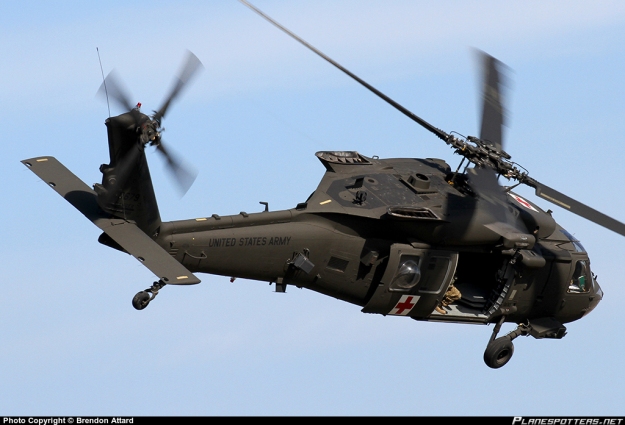Flight Ready: Guaranteeing Optimal Problem for Your UH 60 Helicopter
Flight Ready: Guaranteeing Optimal Problem for Your UH 60 Helicopter
Blog Article
Comprehending the Mechanics and Design Behind Uh 60 Helicopters
The UH-60 helicopter, typically understood as the Black Hawk, stands as a pinnacle of contemporary rotorcraft innovation, embodying a mix of robust engineering and complex auto mechanics. As we peel back the layers of the UH-60's style, a globe of intricate systems and meticulous engineering comes to light.
Background of UH-60 Helicopters
The background of UH-60 helicopters traces back to the late 1970s when the United States Army looked for a sophisticated and versatile energy helicopter to change its aging fleet. In action to this demand, the Sikorsky Airplane Corporation created the UH-60 Black Hawk helicopter. Introduced in 1979, the UH-60 quickly became a staple in military procedures due to its outstanding abilities.
The UH-60 was developed to stand out in a selection of objectives, consisting of army transport, clinical emptying, digital war, and special procedures. Its ability to adjust to various roles made it an important property to the U.S. uh 60. Military and various other army pressures all over the world
Over the years, the UH-60 platform has undergone several upgrades and variations to improve its efficiency and keep rate with advancing mission requirements. These helicopters have seen considerable solution in problems such as the Gulf Battle, Afghanistan, and Iraq, showcasing their reliability and versatility in diverse operational atmospheres. The UH-60's rich history is a testament to its enduring tradition as a premier utility helicopter.

Engine and Power Systems
Making use of advanced propulsion technology, UH-60 helicopters are geared up with advanced engine and power systems to guarantee optimum efficiency and reliability in a variety of functional scenarios. The UH-60, typically referred to as the Black Hawk, is powered by two General Electric T700-GE-701D engines, each with the ability of delivering up to 1,940 shaft horsepower. These turboshaft engines supply the required drive for the helicopter to lug out its goals effectively, including troop transport, medical discharge, and battle assistance.

Blades System and The Rules Of Aerodynamics
How do the blades system and the rules of aerodynamics of UH-60 helicopters add to their functional effectiveness and trip capabilities? The blades system of the UH-60 helicopter plays a vital function in supplying lift and propulsion.
The rules of aerodynamics also play an essential duty in the efficiency of UH-60 helicopters. The structured body and rotor blade style reduce have a peek at these guys drag, enabling the helicopter to accomplish greater rates and better gas performance. The aerodynamic design of the UH-60 also adds to its ability to run in diverse ecological problems, consisting of hot temperatures and high altitudes.
Avionics and Trip Control Solution

In its complex coordination with the blades system and aerodynamics of UH-60 helicopters, the avionics and trip control systems develop a critical network of modern technologies shaping the aircraft's operational capacities. In the UH-60, these systems consist of electronic displays, interaction radios, GPS navigation, weather radar, and auto-pilot systems.
The flight control systems of the UH-60 are in charge of converting the pilot's inputs into the proper adjustments to the blades system, ensuring stable trip and ability to move. These systems are composed of hydraulic actuators, servos, and computer systems that interact to manage the tail and primary rotors, as well as various other flight control surfaces. By specifically handling the helicopter's flight characteristics, these systems enable pilots to do a vast array of missions, from transportation and search-and-rescue to fight procedures, with accuracy and confidence.
Function and Applications in Aeronautics
Avionics systems in UH-60 helicopters incorporate an array of electronic systems that help in navigation, interaction, monitoring, and managing various aircraft functions. These systems consist of electronic screens, auto-pilot systems, interaction radios, General practitioner navigation equipment, and weather condition radar. In addition, these systems incorporate safety features such as auto-pilot modes, terrain understanding advising systems, and security enhancement systems to enhance the general safety and functional abilities of the UH-60 helicopters in various missions, including troop transport, medical emptying, search and rescue, and aerial firefighting.
Verdict
To conclude, the UH-60 helicopter is a versatile airplane with an abundant history and progressed engineering. Its engine and power systems, discover here rotor system, the rules of aerodynamics, avionics, and trip control systems all try this website work with each other to make it a effective and trustworthy maker. The UH-60's function and applications in aviation are huge, ranging from armed forces procedures to browse and save goals. Its continued growth and usage show its importance in the area of air travel (uh 60).
In its elaborate coordination with the rotor system and the rules of aerodynamics of UH-60 helicopters, the avionics and trip control systems create an essential network of technologies shaping the airplane's operational capacities.The flight control systems of the UH-60 are liable for converting the pilot's inputs into the suitable adjustments to the blades system, guaranteeing steady flight and maneuverability. Avionics systems in UH-60 helicopters encompass an array of electronic systems that aid in navigation, communication, surveillance, and controlling various aircraft features. In addition, these systems include safety and security functions such as autopilot modes, surface awareness cautioning systems, and security enhancement systems to improve the general safety and operational capabilities of the UH-60 helicopters in different goals, including troop transportation, medical evacuation, search and rescue, and aerial firefighting.
Its engine and power systems, rotor system, the rules of aerodynamics, avionics, and trip control systems all work with each other to make it a reliable and trustworthy device.
Report this page